Today we are going to look at how to setup a Synology DSM Virtual Machine using Virtual Machine Manager.
There are various reasons someone would want to create a Synology DSM virtual machine. For a long time, my virtual instance of DSM was my “testing grounds”, where I did things that I didn’t want to do to my production instance. I have a few reasons in this tutorial why you might want to run a Synology DSM virtual machine, but there are plenty more.
Before we get started, you need to ensure that you have a NAS that’s capable of running Virtual Machine Manager. You will find the models that support Virtual Machine Manager in this link.
Another thing to note is that Synology gives you one free vDSM license. If you would like to run more, you can, but you’ll have to purchase an additional license. If you’re interested in running multiple different instances, you can purchase a license pack from Synology. After completing this tutorial, you might notice that not all settings are available in vDSM. This is normal and expected.
1. Setup Instructions – Synology DSM Virtual Machine
1. Open Synology’s Package Center and install Virtual Machine Manager.
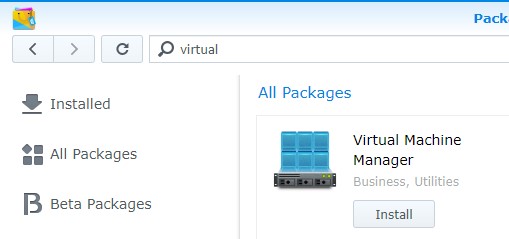
2. If you receive a pop-up asking you to accept that ports 30300,30200-30299,16514,16509,2379-2382 will be opened, you can select OK. If you don’t, you will have to manually open these ports in Synology’s Firewall (if you are using the Firewall).
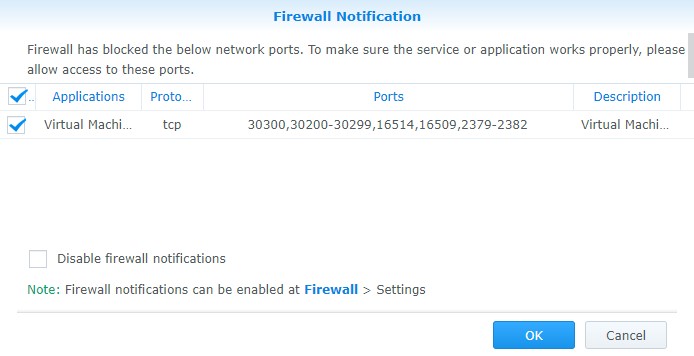
3. Open Virtual Machine Manager. You will be brought to a setup wizard – select Next and configure the Host Settings as you’d prefer. Generally, it’s fine to leave these as default.
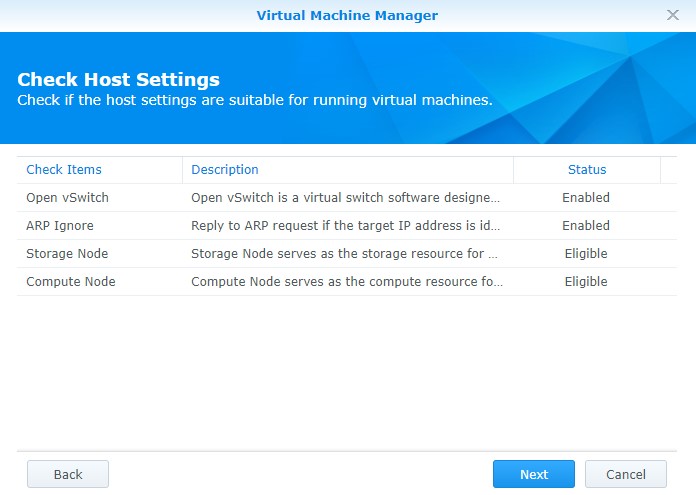
4. Select the volume that you’d like Virtual Machine Manager to be installed on and select Next.
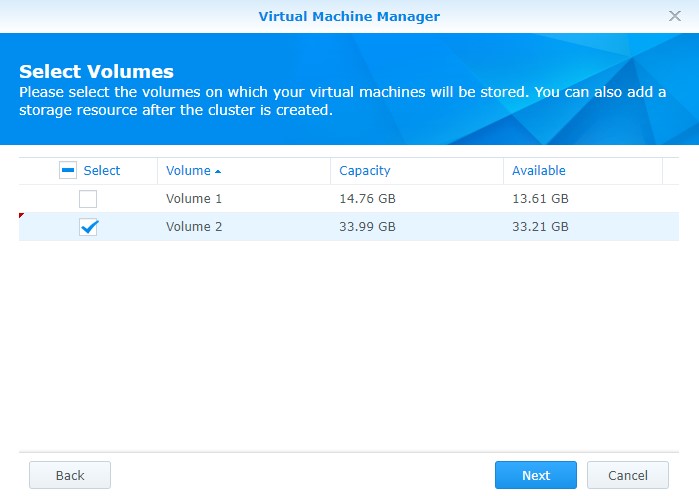
5. You will now be brought to the default landing page of Virtual Machine Manager. The first thing that we need to do to install vDSM is to download the latest DSM Image. Navigate to the Image section, then DSM Image. Select Add, Download Virtual DSM Image, and then OK.
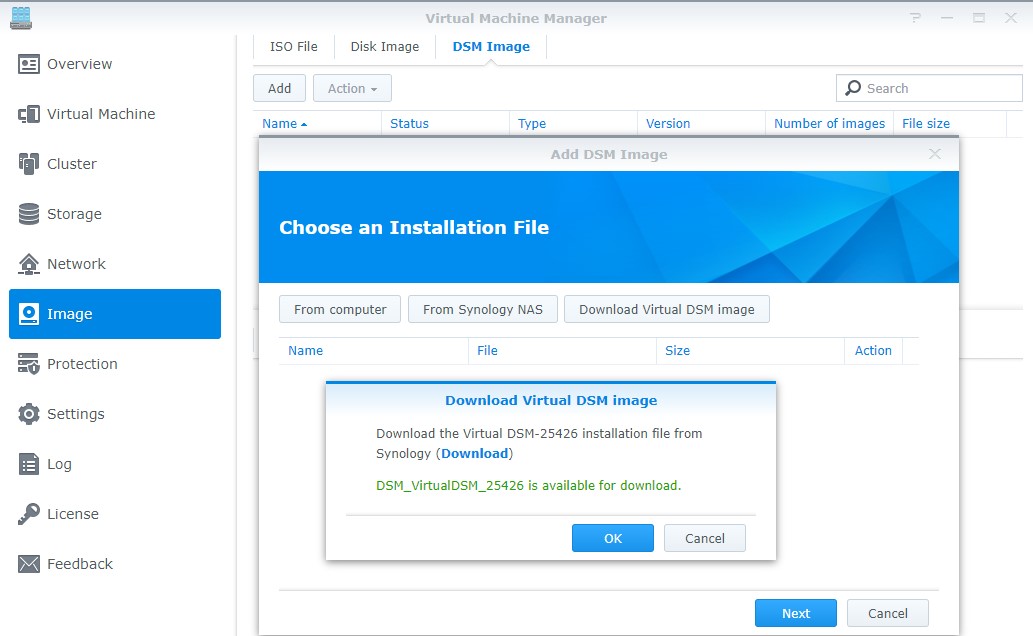
6. Select Next after you’ve confirmed the settings look correct.
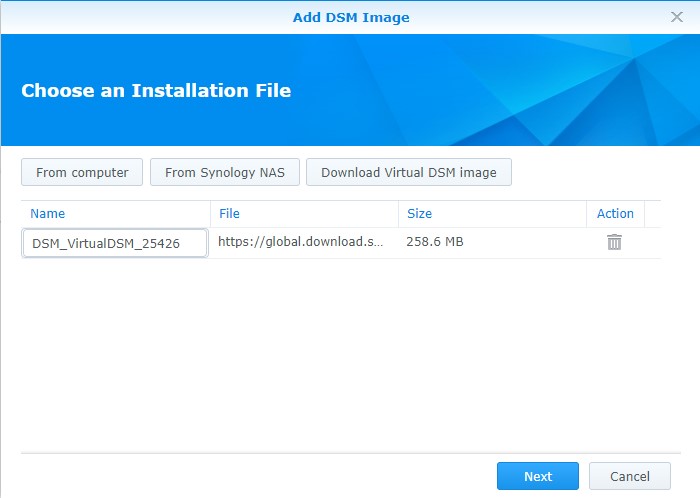
7. Select the host storage and select Apply. The image will now download, which will take a few minutes or longer depending on your internet download speeds.
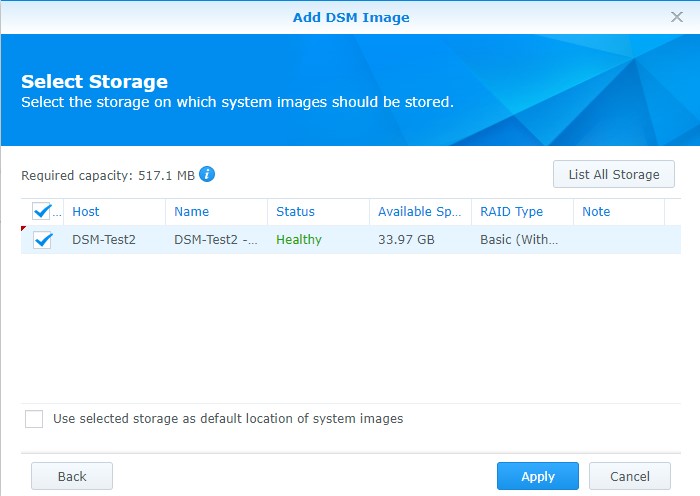
8. When it’s done, you will notice that the image reports Healthy.
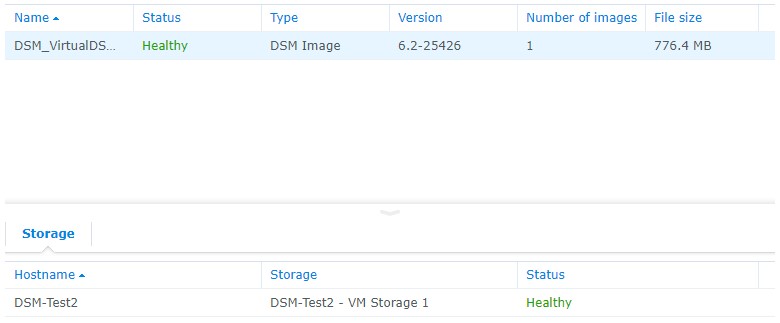
9. Go to the Virtual Machine section and select Create.

10. Select Synology Virtual DSM and Next.
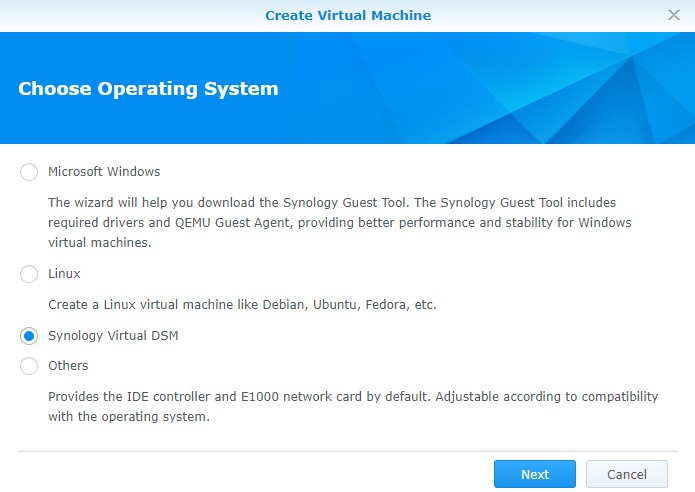
11. Select the Host and select Next.
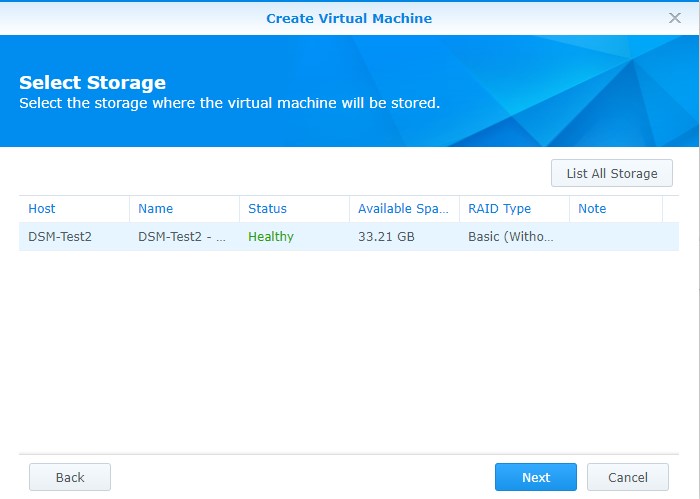
12. Enter a name for your Virtual Machine, select the CPU’s you’d like to use, and the total amount of memory and select Next.
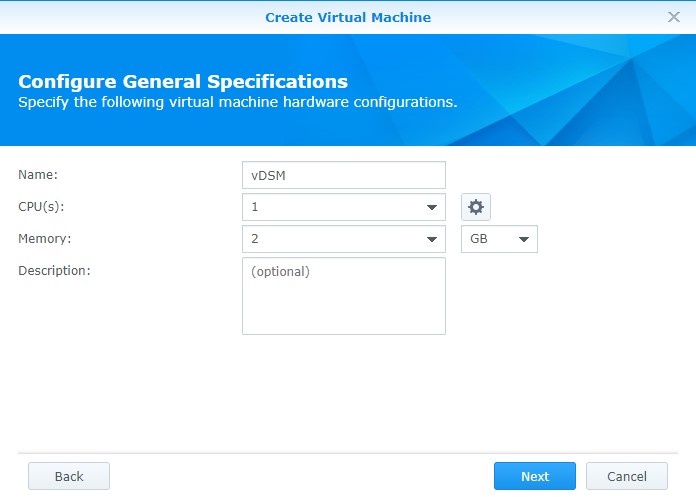
13. Select the DSM Image, enter the amount of storage you’d like to use on the Virtual Disk (this is what will be accessible from vDSM), and select Next.
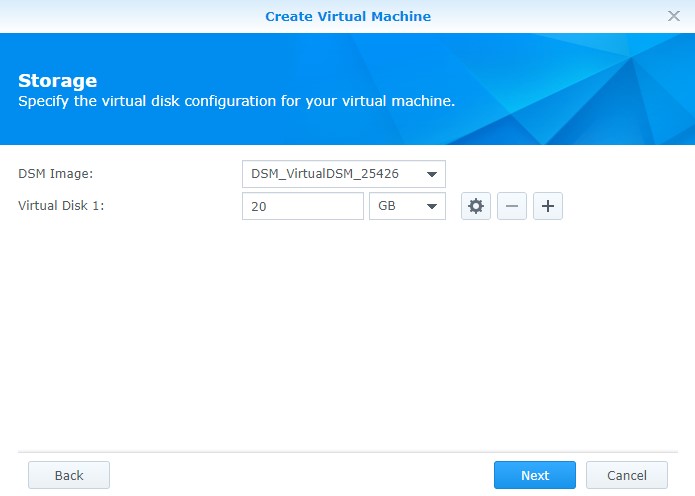
14. Select your Network (default for most).
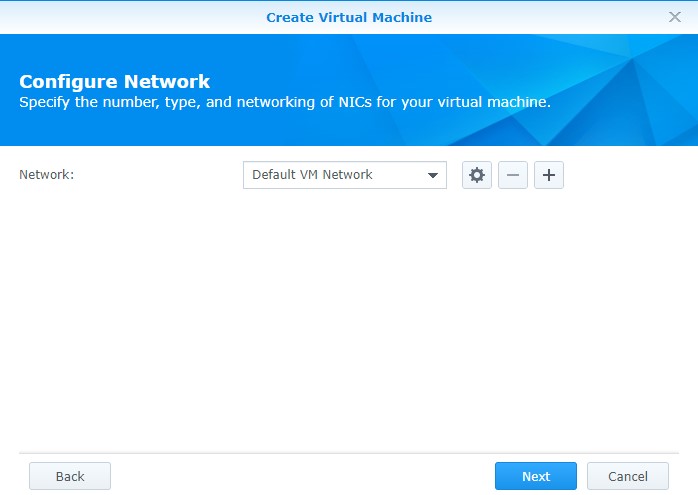
15. Determine if you’d like this to automatically start and select Next.
16. Grant any local users who you’d like to access the virtual machine permission.
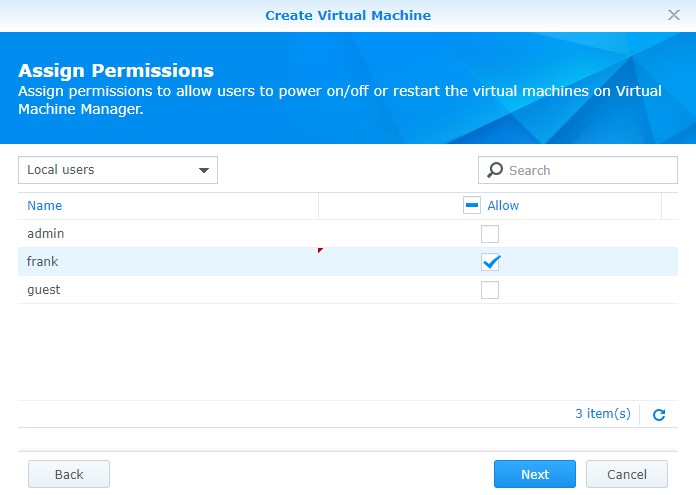
17. Select Power on the virtual machine after creation and select Apply. The virtual machine is now created!
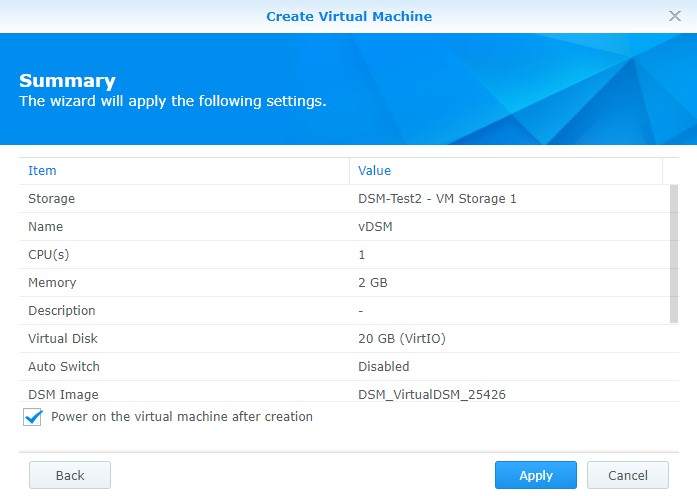
2. License & Server Creation – Synology DSM Virtual Machine
Virtual Machine Manager will give you one vDSM license for free. If you need additional vDSM instances, you will need to purchase an additional license. After the virtual machine is created and powered on, you will need to assign the vDSM license.
1. Select Use existing license.
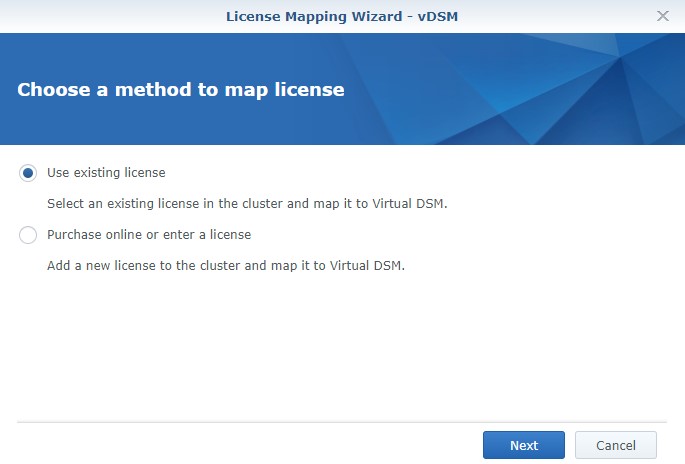
2. Select the free license and select Next.
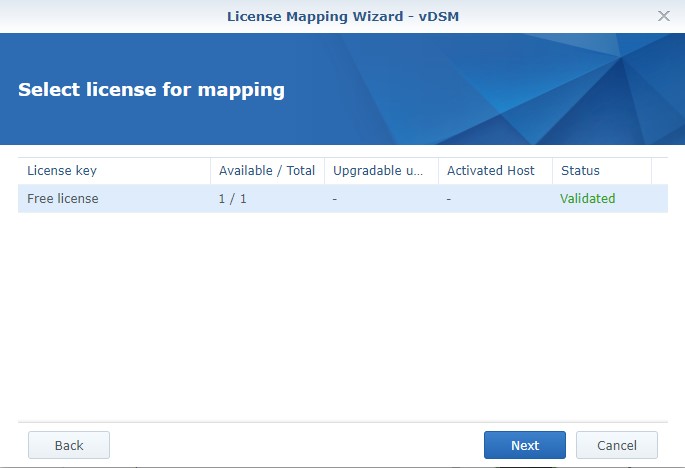
3. Click Apply! Your virtual machine will now power on and be accessible after an IP address is assigned. This process (assigning of IP address) can take upwards of 5-10 minutes, so be patient.
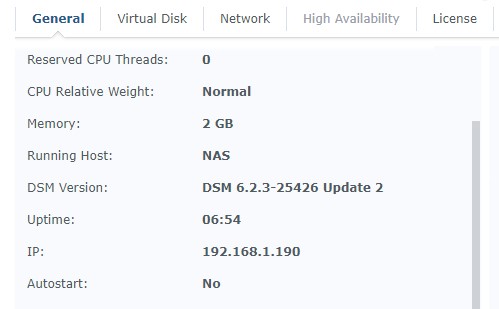
4. Navigate to the IP address assigned and port 5000/5001 (http/https).
5. When you first connect to vDSM, you will need to create a server name and user account.
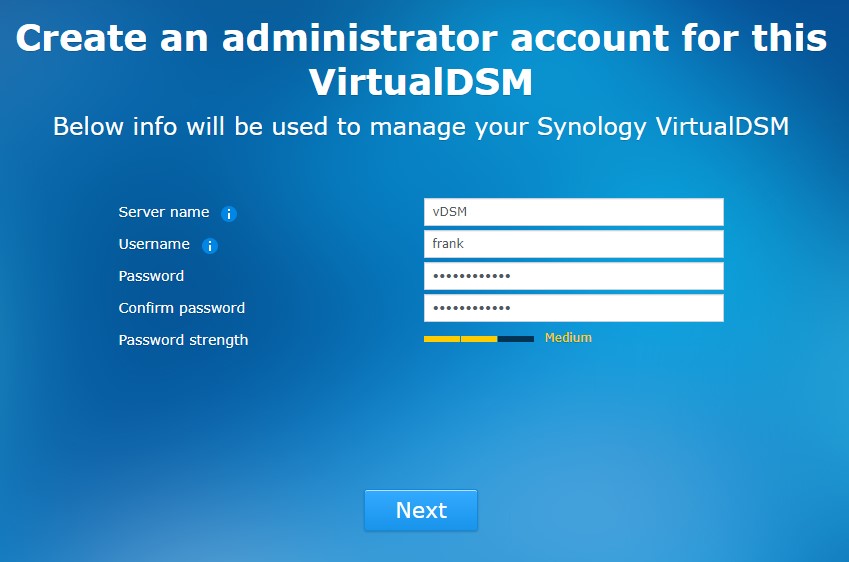
6. vDSM is now set up and configured!
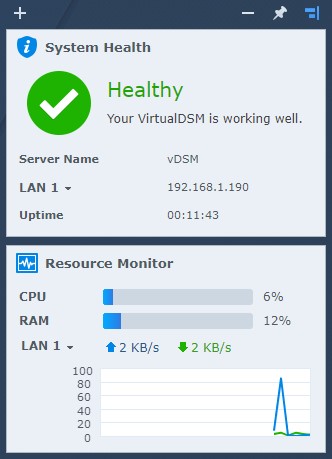
3. Should you run a vDSM Instance?
There’s very little harm in setting up a vDSM instance. At the end of the day, anything you create can be deleted, and running a vDSM instance will give you the freedom to experiment as you’d like. The potential vDSM downsides are generally performance related, as Synology’s NAS devices aren’t designed to be hypervisors. While maxing out the memory and running a few virtual machines (VM) is possible, you will potentially notice performance degradation after you set up one or multiple VM’s.
Here are some reasons why you might consider setting up vDSM:
- Test Server: Synology’s DSM, while powerful, can be confusing when first starting. Their documentation is generally lacking and having a test environment where you can try new things is great.
- VPN Client/Server: By default, Synology only allows you to run a VPN Client or Server on DSM. Meaning that you need to pick between setting up a VPN server or connecting your NAS to a different network by utilizing the VPN client. vDSM allows you to host the VPN Server and connect to a VPN client at the same time. Granted, they are separate instances, but you’re able to do both if you need to.
- Test New DSM Versions: This ties into the first use-case, but the ability to test new DSM preview versions (most recently, 7.0) in a sandbox environment.
4. Conclusion
For the majority of people, setting up Synology’s DSM as a Virtual Machine might not be worth it. Synology devices are setup and sold as “turnkey” solutions that don’t require tons of configuration and testing. However, that’s not to say they aren’t powerful devices and having a sandbox environment that you can test things or an isolated instance to separately manage is beneficial to some. Ultimately, you’ll need to decide if it’s worth it for you!
Thank you for reading the tutorial. If you have any questions, leave them in the comments!

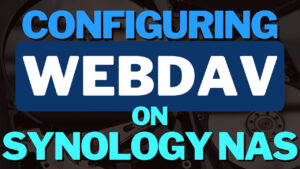
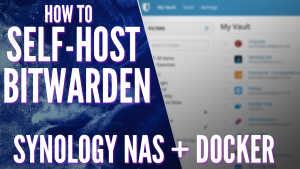


Hi
Thanks for the tutorial it’s great really useful I have followed quite a few of them and subscribed to the channel.
I have followed this one but have a problem with the IP address assignment. When the DSM 7 image is started it chooses an IP address in the 169.254.x.x range. My network and the NAS it is on all have addresses in the 192.168.1.x. There is a dchp server setup on the network and the nas is using this for both network adapters (it is a DS920+) with static ip addresses assigned.
It seems to me that the VM cannot talk to the external network so falls back to assigning these internal 169.x.x.x address. With this address I can’t connect to the VM from the network as the mask prevents it. So am unsure whether am able to connect to the VM or not.
I have VMM rule in the firewall to allow it to communicate, and have temporarily disabled the firewall while creating the image and starting it up. But they give the same result. I assume this is something to do with the vLAN in the VM but not changed this just used the default exactly as you have in the tutorial above.
I have removed VMM and re-installed with the same result. There are no other VM on the machine but I have some docker containers that all work correctly.
Any suggestions would be gratefully received. Thanks in advance.
Regards
Andy
That is a strange issue for sure. If you select “Virtual Machine”, then “Network”, do you see the default VM network? I’m not entirely sure why it’s assigning an IP address like that, as it should be on your local subnet. I would focus on checking out the network configuration of the VM, as that is almost certainly the issue. Let me know what you find and we can continue troubleshooting!
Hi I am having the same problem, I cannot connect to http://169.254.8.122:5000 which is what the IP address is as Im on a 192.168.x.x network
Are you seeing an IP address inside of Virtual Machine Manager? If so, it’s showing as 169.254…?
Thanks a lot WunderTech – I followed your guide and everything works well!
I’m glad to hear that, thanks for checking out the tutorial!
Has anyone resolved this, i too cannot get my virtual pc to connect to my network or make it visible to my network
When you say visible to your network, do you mean from a shared folder perspective?
Hi, yes, I need the existing network in the office to be able to connect to the Virtual PC on the NAS. I can see the NAS but not the virtual PC on the NAS. This is so that all users can utilise the same stock control package
When you say virtual PC, did you install a Windows or other operating system? Or are you trying to have local devices connect to virtual DSM?